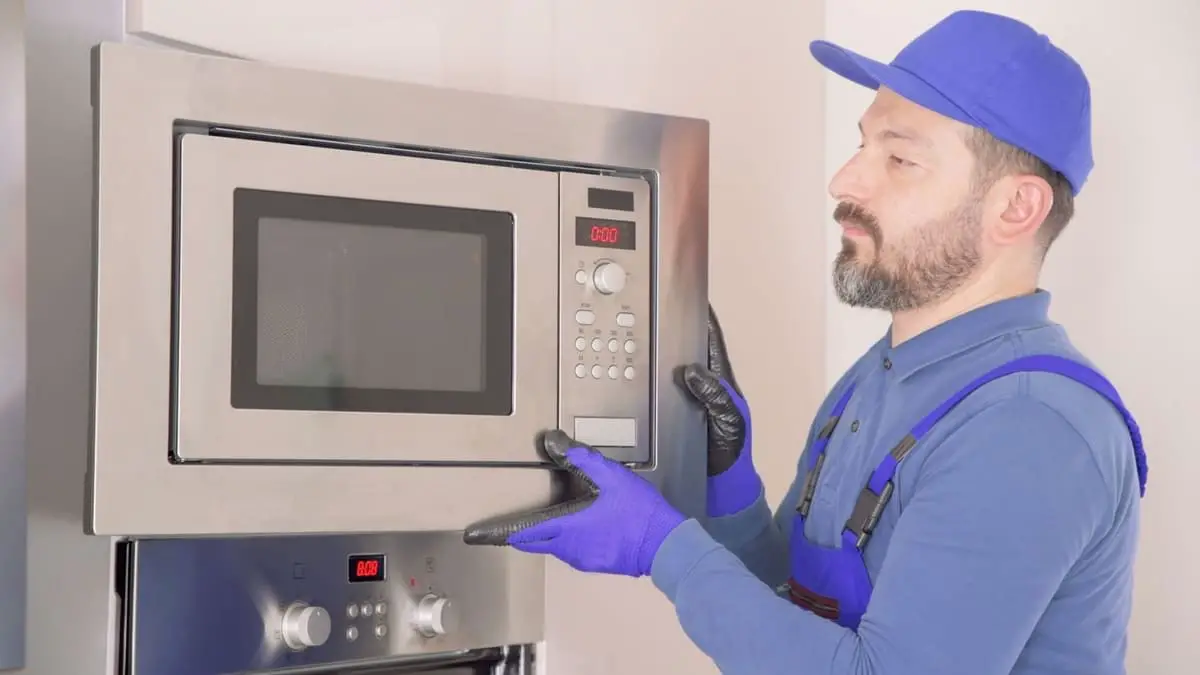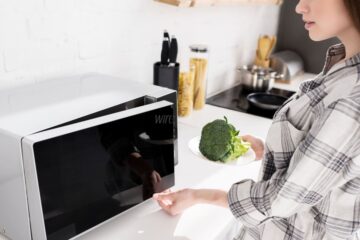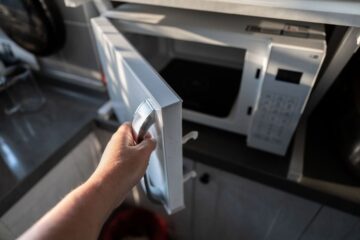Microwave ovens have come a long way since their inception. From simply reheating leftovers to now being able to cook entire meals, microwave technology has come a long way. One such advancement in microwave technology is sensor cooking. In this article, we will be discussing what sensor cooking microwaves are, how they work, their advantages and disadvantages, and tips for using them.
What Is Sensor Cooking Microwave?
A sensor cooking microwave is a type of microwave oven that uses sensors to detect when food is cooked. Instead of relying on preset cooking times, the sensors monitor the moisture levels of the food being cooked to determine the cooking time needed. This ensures that food is cooked evenly and avoids overcooking or undercooking.
How Do Sensor Cooking Microwaves Work?
Microwave Technology Basics
Microwave ovens use electromagnetic waves to heat food. These waves cause the water molecules in the food to vibrate, generating heat that cooks the food. Microwave ovens emit waves at a specific frequency of 2.45 GHz, which is absorbed by water molecules.
How Sensors Work in Microwaves?
Sensor cooking microwaves use humidity sensors to detect the moisture levels of the food being cooked. As the food cooks and its moisture evaporates, the sensors detect this change and adjust the cooking time and power accordingly. This ensures that the food is cooked evenly and prevents it from becoming too dry or burnt.
Benefits of Using a Sensor Cooking Microwave
Using a sensor cooking microwave offers several benefits:
- Even cooking: The sensors ensure that the food is cooked evenly throughout, avoiding overcooking or undercooking.
- Time-saving: Sensor cooking can save time by eliminating the need for trial and error cooking times.
- Versatility: Sensor cooking microwaves can cook a wide range of foods, from vegetables to meats to desserts.
- Reduced energy consumption: Since the cooking time is adjusted based on the moisture levels of the food, sensor cooking can save energy by not overcooking the food.
Types of Food That Can Be Cooked Using Sensor Technology
Sensor cooking microwaves can be used to cook a variety of foods. Some of the most common foods that can be cooked using sensor technology include:
- Popcorn
- Vegetables
- Rice
- Potatoes
- Meat
- Fish
- Casseroles
- Baked goods
Factors to Consider When Choosing a Sensor Cooking Microwave
When choosing a sensor cooking microwave, there are several factors to consider:
Size and Capacity
The size and capacity of the microwave should be appropriate for your needs. If you have a large family, you may need a larger microwave to accommodate larger portions.
Power and Wattage
The power and wattage of the microwave will affect the cooking time and efficiency. Higher wattage microwaves will cook food faster, but may also be more expensive.
Price and Budget
The price of a microwave can vary greatly depending on its features and brand. It’s important to consider your budget when choosing a microwave.
Additional Features and Functionalities
Some sensor cooking microwaves come with additional features such as defrosting, grilling, or convection cooking. These features can be useful if you plan to use your microwave for more than just heating up leftovers.
Brand and Reputation
When choosing a microwave, it’s important to consider the brand and its reputation. Look for brands that are known for their quality and reliability.
Advantages and Disadvantages of Sensor Cooking Microwaves
Advantages of Using a Sensor Cooking Microwave
- Even cooking
- Time-saving
- Versatility
- Reduced energy consumption
Disadvantages of Using a Sensor Cooking Microwave
Cost: Sensor cooking microwaves are generally more expensive than traditional microwaves, which can be a disadvantage for those on a tight budget. However, the additional cost is often justified by the convenience and precision that sensor technology provides.
Limited Control: While sensor cooking microwaves provide a high level of precision and automation, some people may find that they prefer more control over their cooking. With sensor technology, the microwave decides when the food is done, which may not always align with a person’s preferences or desired level of doneness.
Not Suitable for All Foods: Although sensor cooking microwaves can cook a wide variety of foods, they may not be suitable for certain types of dishes, such as those that require browning or crisping. In these cases, a traditional oven or stovetop may be a better option.
Comparison with Other Types of Microwave Ovens
Sensor cooking microwaves are just one type of microwave oven available on the market. In comparison to other types of microwaves, here are some key differences:
Traditional Microwaves: Traditional microwaves do not have sensor technology and rely on preset cooking times and power levels. They are typically less expensive than sensor cooking microwaves, but may not provide the same level of precision and convenience.
Convection Microwaves: Convection microwaves combine the power of a microwave with the browning and crisping capabilities of a traditional oven. They typically have more features and functionality than sensor cooking microwaves, but may also be more expensive and complex to operate.
Grill Microwaves: Grill microwaves have a heating element that allows them to brown and grill foods in addition to cooking them with microwaves. They are generally less expensive than convection microwaves, but may not have the same level of versatility and precision.
Tips for Using a Sensor Cooking Microwave
To get the most out of your sensor cooking microwave, here are some tips to keep in mind:
- Use the correct dishware: Sensor technology relies on the ability to detect heat and moisture, so using the right type of dishware can help ensure that your food cooks evenly and accurately. Use microwave-safe dishes and avoid using metal or aluminum foil, which can interfere with the sensors.
- Follow the instructions: Different brands and models of sensor cooking microwaves may have slightly different instructions and recommended settings. Be sure to read the manual and follow the manufacturer’s recommendations to achieve the best results.
- Avoid overloading the microwave: Sensor technology relies on the ability to detect heat and moisture, so overloading the microwave can make it difficult for the sensors to work properly. Follow the recommended guidelines for the maximum amount of food that can be cooked at once.
Maintenance and Care for Sensor Cooking Microwaves
To keep your sensor cooking microwave in top condition, here are some maintenance and care tips to follow:
- Clean regularly: Like any kitchen appliance, a microwave can accumulate dirt and grime over time. Clean the interior and exterior of the microwave regularly with a damp cloth or sponge.
- Avoid harsh chemicals: Avoid using abrasive cleaners or harsh chemicals on your microwave, as they can damage the surface and interfere with the sensors.
- Check for issues: If you notice any issues with your microwave, such as uneven cooking or error messages, refer to the manual or contact the manufacturer for troubleshooting tips.
- Replace as needed: Microwaves generally have a lifespan of around 10 years. If your microwave is showing signs of wear and tear or is no longer functioning properly, it may be time to consider replacing it.
Conclusion
In conclusion, sensor cooking microwave ovens offer a convenient and efficient way of cooking various types of food. With their advanced sensor technology, they can automatically adjust cooking times and temperatures, resulting in perfectly cooked meals every time. However, it is important to consider the cost, maintenance, and limitations of sensor cooking technology before purchasing one.



